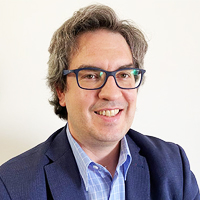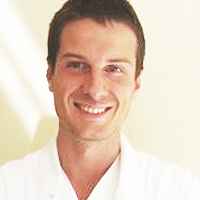The influence of opioid on the microstructural organization of the Wall OT the uterus of the white laboratory rat
Published on: 11th December, 2019
OCLC Number/Unique Identifier: 9272371732
Drug addiction is one of the burning problems in the modern society. Annually there is a steady increase in the level of drug abuse. United Nations Office on Drugs and Crime publishes “World Drugs Report 2018”, where it was reported that about 275 million people (almost 5.6% of the world population) aged 15-64 used drugs at least once in their lives, and opium production increased by 65% in 2016-2017 [1-3]. Therefore, the question of studying the influence of drugs on the structural organization of organs remains open and relevant [4,5].
Chase out or unfortunate coping strategy? Analysis of urban settlement of the homeless addicts at public parks
Published on: 8th September, 2021
OCLC Number/Unique Identifier: 9231824192
Extant studies have labelled persons-with-addiction and the homeless as ‘invaders’ of public parks, aggressive/violent with psychiatric and medical disorders, a burden to the society, and transmitters of most deadly airborne or chronic diseases. Literature subtly discuses that such people must be chased out of the public. Yet, such studies have not concurrently analyzed from the viewpoint of urban parks users, the persons-with-addiction and the homeless people what needs to be done to improve the situation. Therefore, the study aims to explore whether problematic communities and subcultural factors make the disadvantaged resort to negative copping strategies when their legal means are blocked: how the other park users respond to the homeless drug addicts’ hardship: and the possible suggestions from all the park users. This is done with reference to social disorganization and Sub-culture theory, and through ethnographic research approach (8 months field observation) and in-depth-interviews with 27 participants. Our study found that persons-with-addiction and the homeless are not always aggressive/violent/harmful as they have been labelled. But only disadvantaged individuals who desire to emulate the ideals and ambitions of the middle class but lack resources to achieve such success. Being overwhelmed with such frustrations from their dilemmas, they consider themselves ‘double-failures’ and retreat into drug addiction and find abode in the public spaces. We therefore conclude that persons with addiction and the homeless people are not always violent and criminal persons who are to be chased out of public parks. But only disadvantaged individuals who need help for choosing a negative coping strategy.
Cognitive behavioral therapy treatment for drug addiction
Published on: 17th April, 2023
Drug addiction remains a major health concern following its devastating consequences to the users and the economy. Current statistics show a rising trend in substance abuse around the globe with approximately 284 million people engaging in drug abuse. Various approaches are used to treat the victims of drug abuse. Cognitive behavior therapy, a form of nonpharmacological intervention, has also been shown to be an effective treatment option for drug addiction. The use of Cognitive Behavioral Therapy (CBT) has grown since the 1970s to become one of the most important models of psychotherapy in this decade. Various empirical studies have shown the efficacy of CBT in well-controlled trials. A total of 19 randomized trials (cases) (with over 1400 patients treated) were selected and studied. In the various cases, results showed that patients were treated for drug and substance abuse disorders with the majority being those who abused cannabis, cocaine, alcohol and other opioids. In most cases, the CBT techniques that were used for drug addiction included cognitive restructuring, relapse prevention and contingency management. Components of CBT for drug addiction include skills and training, amplification of non-substance-related activities, approaches for managing urges, drug rejection and improvement of social aptitudes. Cognitive restructuring focuses on the identification of misconceptions and influencing the way people think about themselves by eliminating distorted thinking. Relapse prevention focuses on the identification and prevention of high-risk situations that may trigger the patient to engage in drug abuse. Contingency management reinforces positive behaviors and reduces negative behaviors through the use of rewards and incentives.
Drug Abuse and Mental Illness in Erigavo Mental Hostiptal, Erigavo, Somalia
Published on: 10th September, 2024
Mental illness is an international health crisis that puts the lives of over three hundred million people (Four percent of the world’s population) at risk. The study was conducted at the Erigavo Mental Hospital in Somaliland and its main focus was the bond between substance abuse and mental illness. The research was to check the influence of the different drugs, screen mental health problems, and draw a link between drugs and mental illness. The sources of the quantitative data were a total of 27 employees and managers. This study is cross-sectional. We employed the measure of the magnitude and direction of a linear relationship between two variables with the Pearson correlation coefficient. The outcomes that were acquired show that there was use and particularly abuse of khat, substance smoking, and alcohol consumption, the score means of which were quite high. The investigation results, however, imply that through drug use and other forms of alcohol drug abuse, one of them counter various mental health problems. Furthermore, the addicted people demonstrated the tendency to use force in their attempt to solve the conflicts and to experience the highest degree of tension, with the mean score of the former giving 4.11 while the standard deviation of the latter giving 1.086, thus this shows the mental impact of drug use on the inhabitants of Erigavo. The main result of the study was the strong, positive relationship between drug addiction and mental illness, which became evident through an r - value of 0.509 and a p - value of 0.559. It means that those people who are involved in drug misuse are the ones who are likely to have mental health disorders. Based on the findings of the study, we suggest a combination of measures to recover drug addiction and mental illness. This consists in strengthening prevention. The study that lays the groundwork for suggestions, involves an approach that is holistic in nature. The main ideas of preventing drug usage, psychological health care, enhancing mental health services, and working towards certified professionals are key integrated activities of the whole concept. The hospital, thus, will be in a better position to eliminate the two major disease components namely; drug abuse and mental ailment. Thus, in this way, with the help of the new treatment approaches, a hospital provides and their patients who are quite likely to recover and lead healthy.




